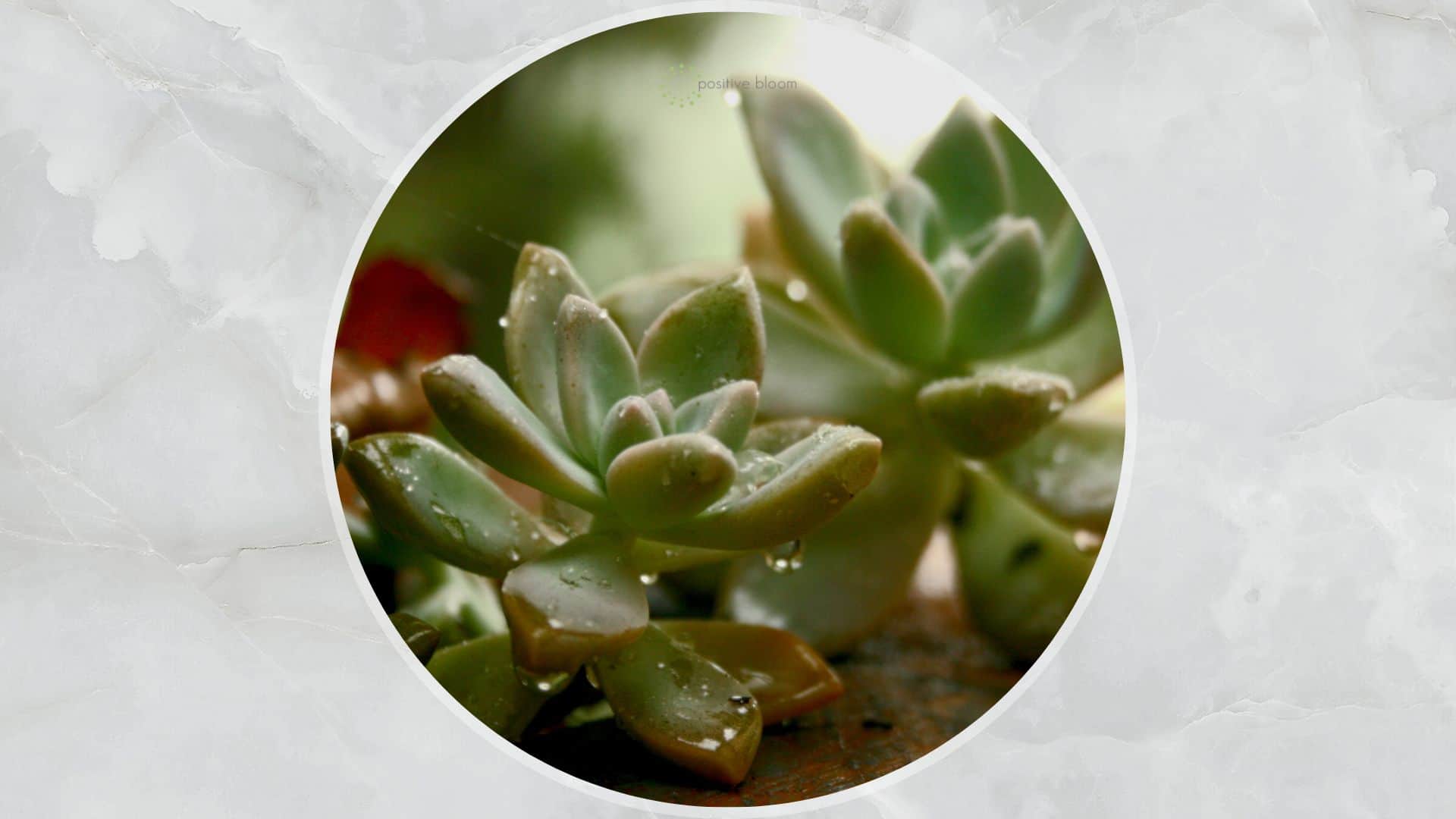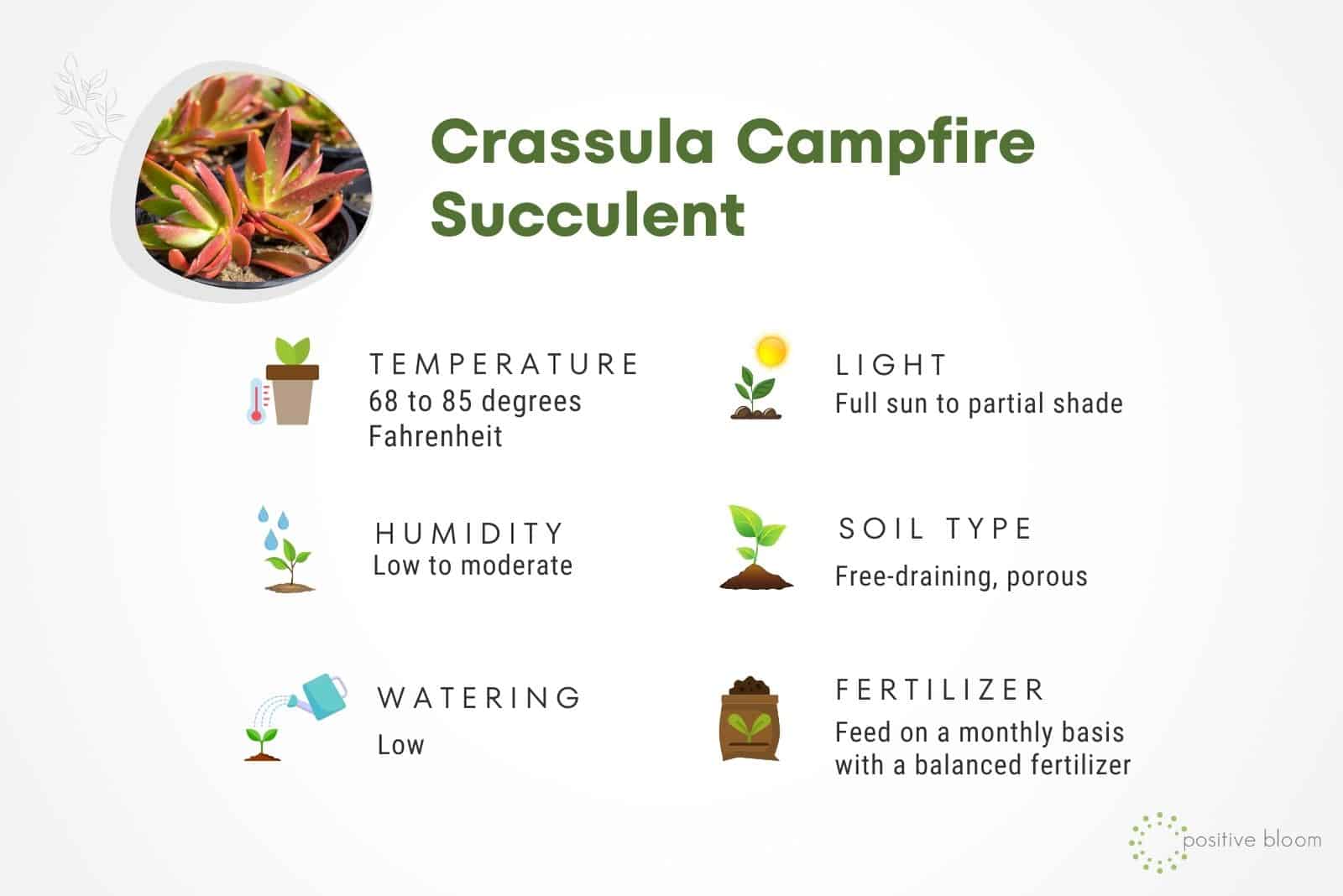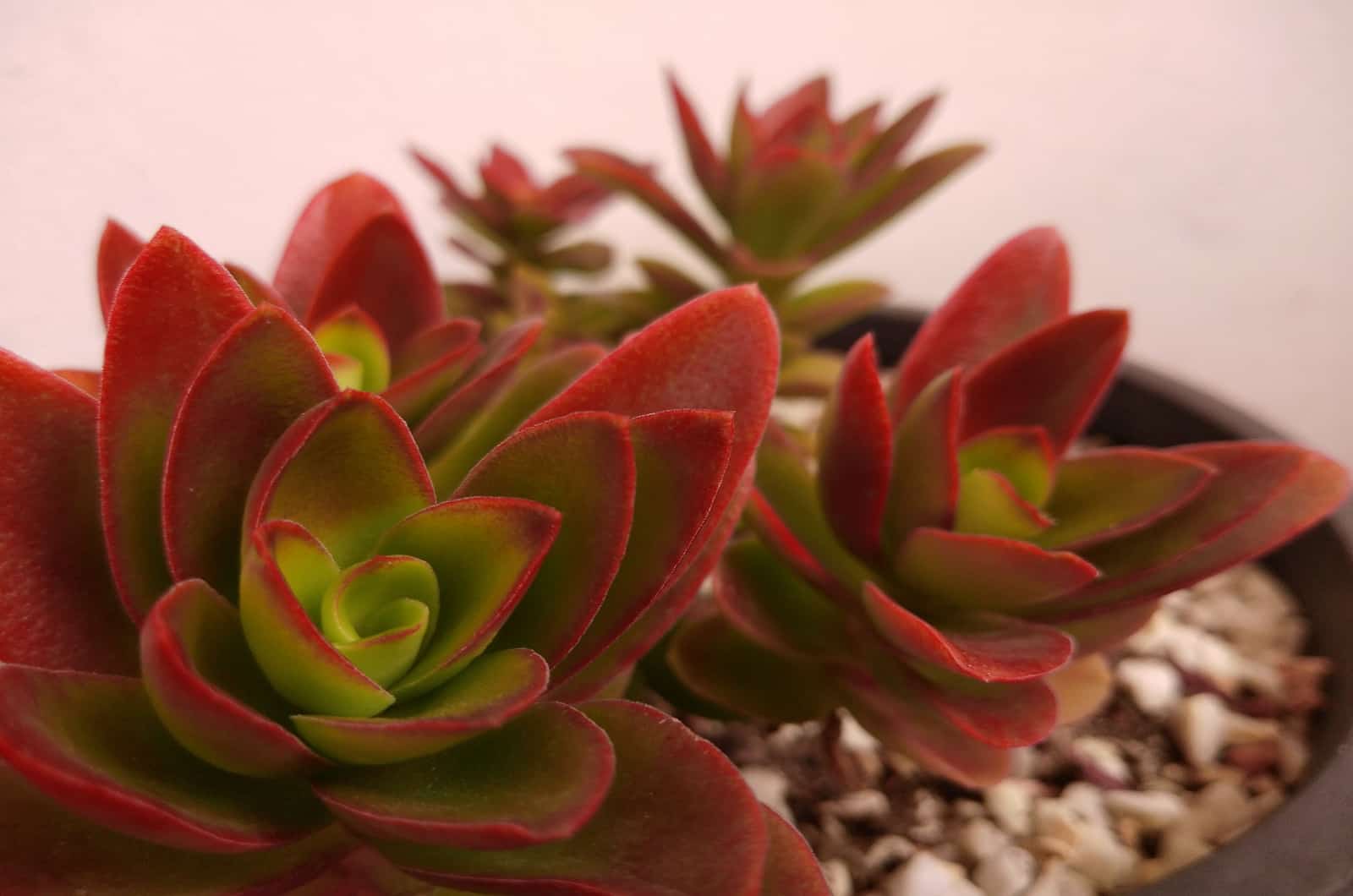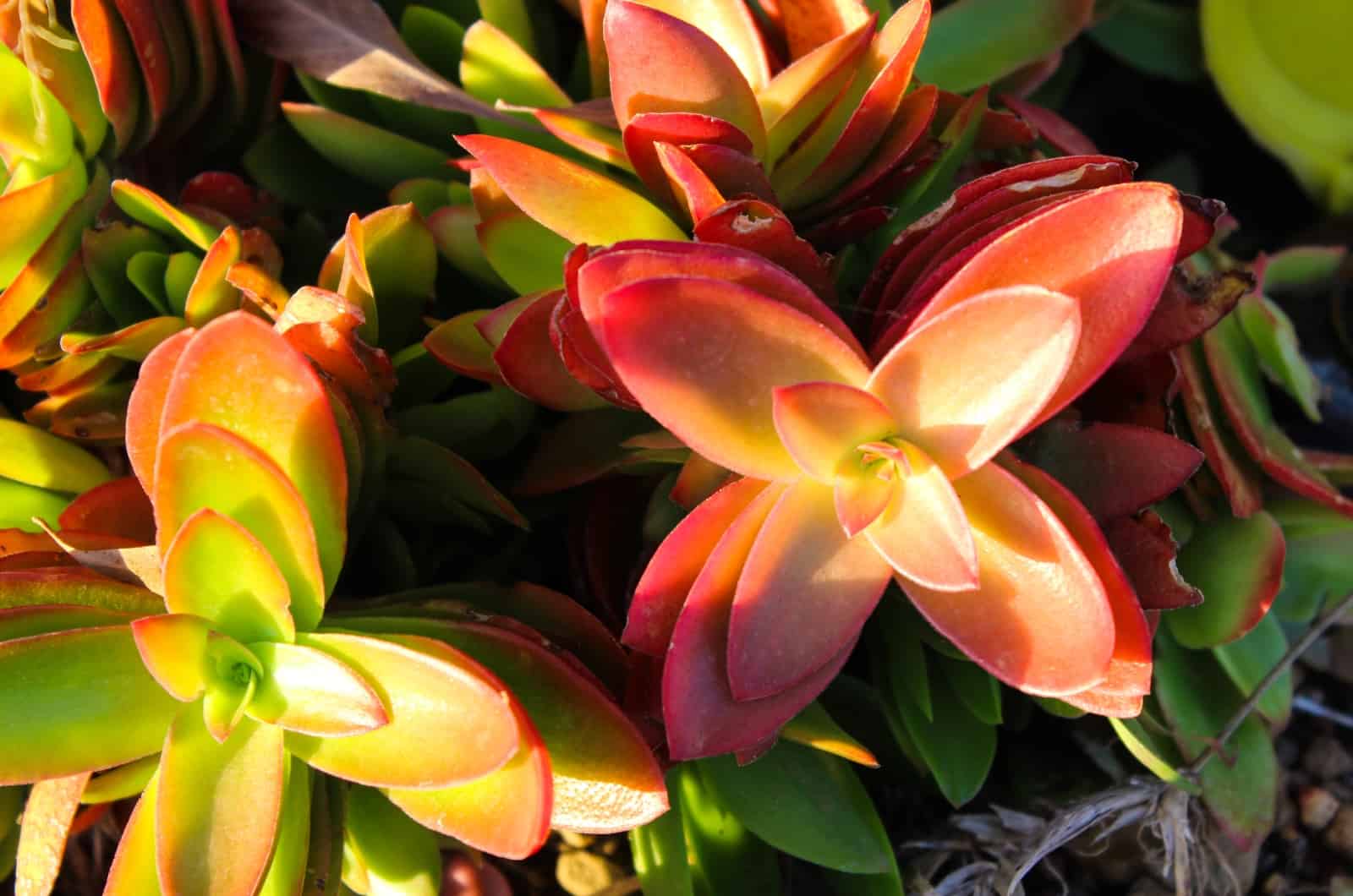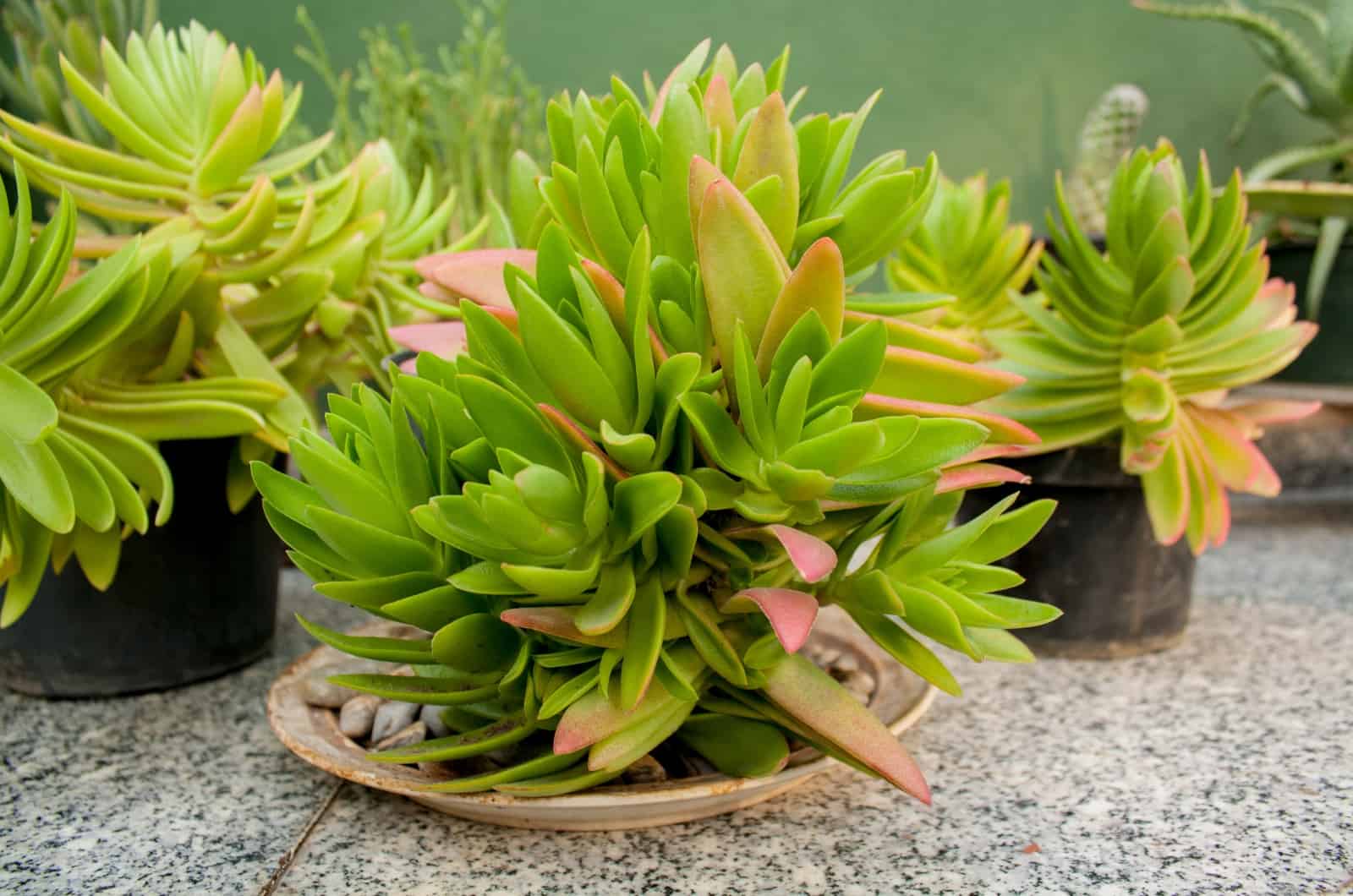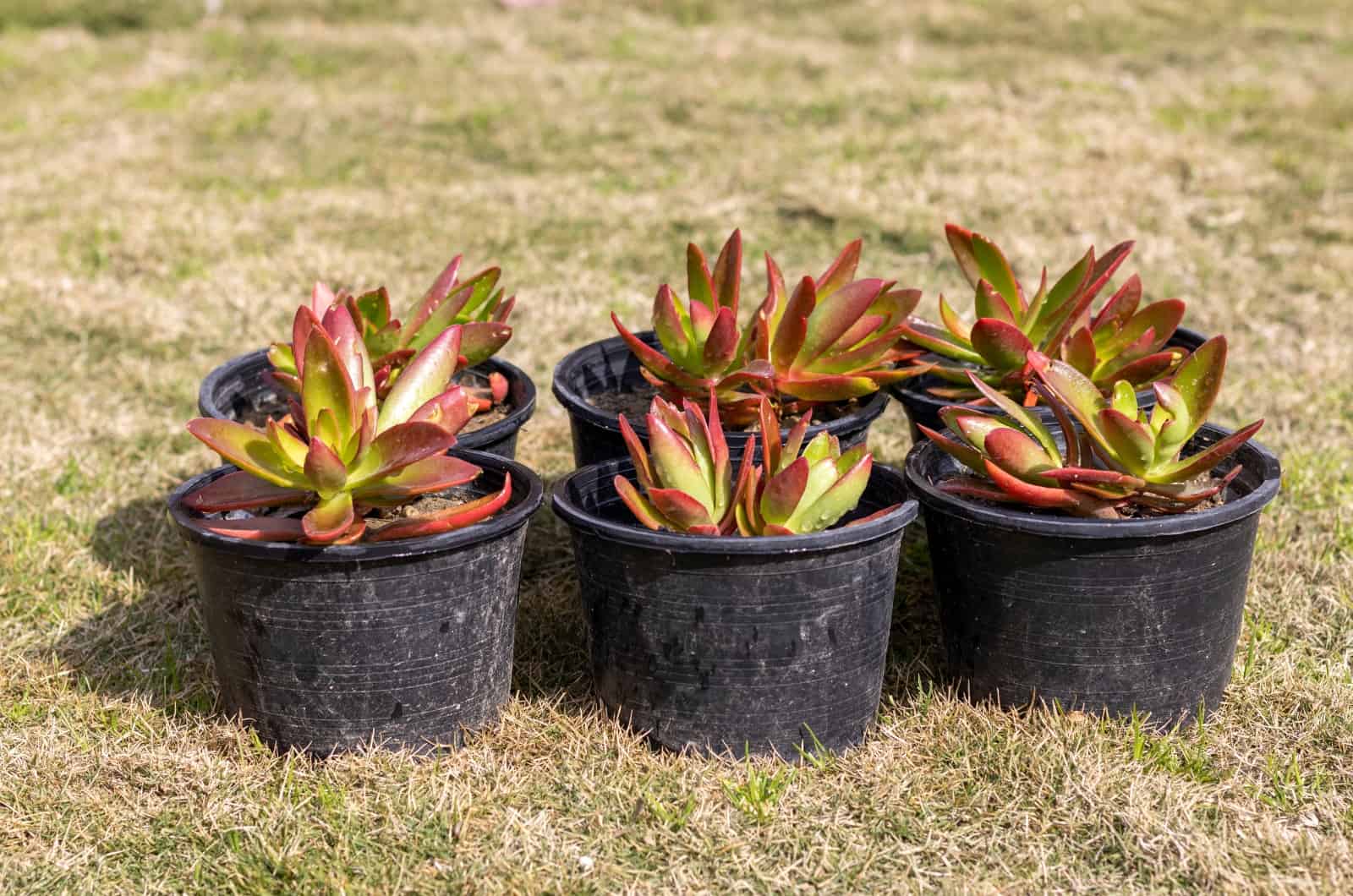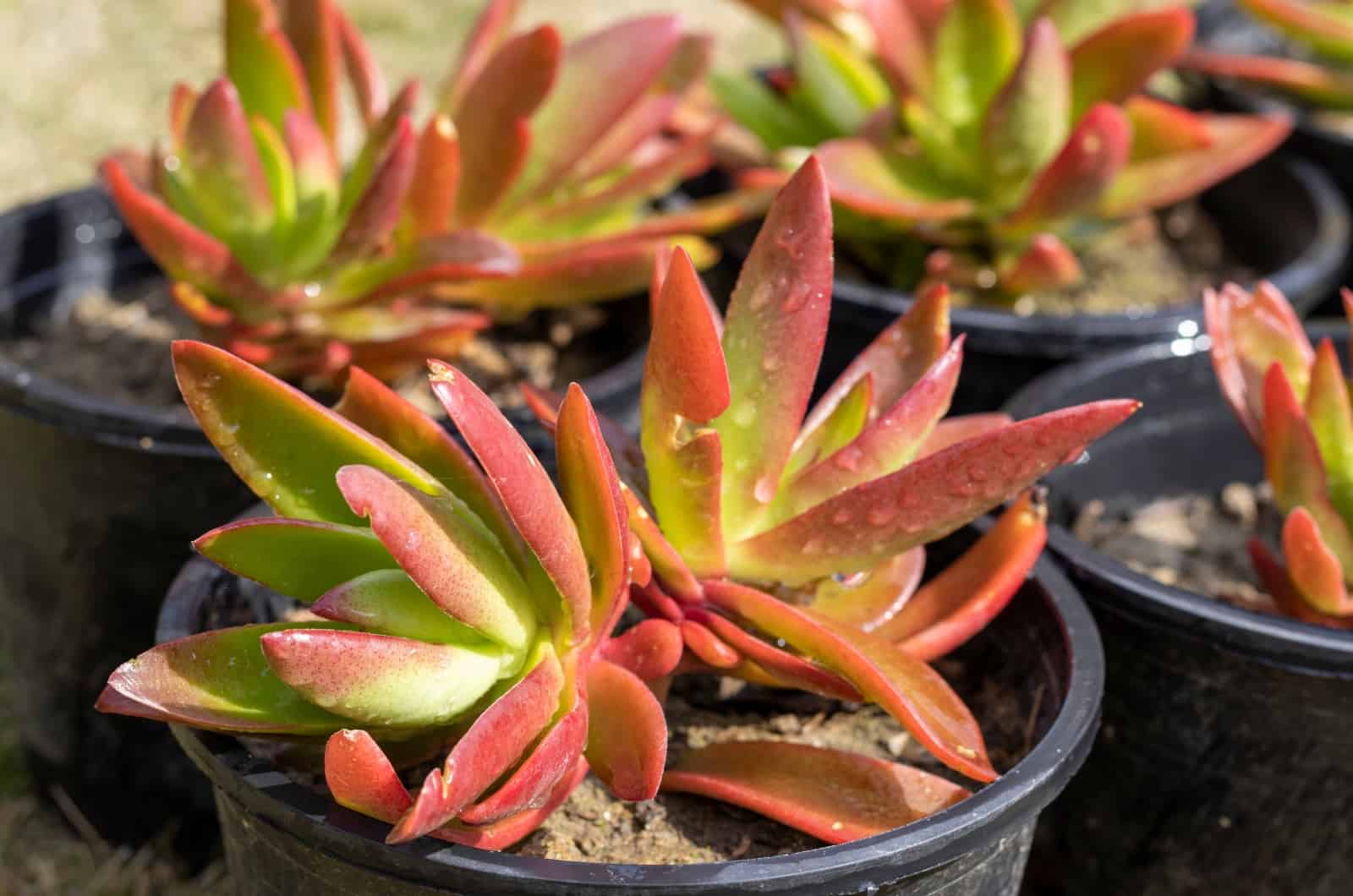If your plant collection is full of plants with green leaves and you want to spice things up a little bit, I have the perfect plant for you!
The Campfire succulent is a breathtaking plant from the Crassula genus. If you grow its cousin, the Jade plant, then you know how easy it is to maintain these plants.
The vibrant red leaves will make any room prettier, and since this plant is adaptable to various growing conditions, you have plenty of options when it comes to location.
In this article, I’ll tell you more about the features and care requirements of the Campfire plant, and I’ll also go through some propagation methods and common issues with solutions.
[table id=647 /]
What Is The Campfire Succulent?
The Campfire is a cultivar of the Crassula capitella species, just like the Red pagoda succulent.
This plant is typically bright green, but its thick, long foliage with pointy tips can turn fiery red. This occurs when the capitella Campfire is exposed to direct sunlight.
At first sight, the leaves could be mistaken for blossoms. They also have the appearance of red flames, hence the common name, Red flames plant.
This species generates blossoms that form in clusters of small, white blooms linked to a single stem.
How To Care For The Crassula Campfire Succulent
Let’s discuss the care requirements of this plant in detail!
Light Requirements
The Campfire cultivar is a sun-loving plant that requires a lot of bright light whether kept indoors or outdoors.
If you want to grow this lovely Crassula outside, make sure it gets enough sunlight. Alternatively, consider a somewhat shaded location that receives mild morning sun.
Capitella plants flourish on south-facing window sills when grown as houseplants.
During the hot summer months, the Campfire plant will benefit from some shade.
Surprisingly, when succulent plants are exposed to a lot of light, their red hue darkens and they become even more gorgeous!
Artificial lights can assist in providing adequate illumination for your capitella campfire succulent, but try to provide as much natural light as possible.
Etiolation in succulents primarily occurs due to lack of light, so you need to be extra careful with the light level for your Campfire.
Watering Schedule
The Campfire plant stores water in its foliage, which is a typical feature of succulent plants.
If you don’t irrigate your green buddy for some time, it will use the water that has been stored. It’s a type of coping strategy developed by these plant species to help them endure drought in their natural surroundings.
It’s better to delay irrigation than to overwater your Campfire and risk root rot.
Add water only if the growing substrate is completely dry. Give it a while if the soil is still damp below the surface.
Interestingly, dehydration has a similar impact on the red hue of the Campfire plant; the red hue will be deeper if the plant lacks water.
If the plant is very dehydrated, it will have the opposite effect; paleness and withering typically occur.
If too much water accumulates in Campfire crassula potting soil, it will eventually develop root rot, which can be lethal.
When temperatures are very high, the capitella Campfire will require more water. On the contrary, you don’t need to irrigate your Crassula during dormancy (colder months) as frequently.
Temperature & Humidity
The Crassula capitella Campfire prefers temperatures ranging from 68 to 85 degrees Fahrenheit. This specimen can withstand a variety of growing conditions, but frost is not one of them.
Never let temperatures for your Campfire Succulent drop below 50 degrees Fahrenheit.
One challenging aspect of improper temperatures is that they have a substantial impact on the watering requirements of Campfire plants.
For instance, your Crassula will lose water faster during hot summer days, so you’ll need to irrigate more often.
The plant needs less water during the winter months because the temperatures are lower and the plant is dormant.
Water evaporates slowly when temperatures are low, increasing the likelihood of root rot.
Avoid placing your Campfire plant near heating vents, air conditioning systems, fireplaces, and drafty windows. Rapid temperature swings and cold drafts can harm your Crassula and cause unnecessary problems.
Humidity
The Campfire plant isn’t finicky about humidity levels. As long as humidity is anywhere between 30% and 50%, the plant will grow just fine.
This feature makes this Crassula one of the best plants you can grow indoors.
If you are comfortable in your home regarding humidity, the Campfire plant will feel the same way.
Soil
The potting mix should also be loose to enhance aeration in the soil and provide enough oxygen for the Campfire plant roots.
The good news is that every nursery has succulent/cactus soil mix on its shelves. This is probably the best choice for novice plant growers.
To get the best potting medium for your Campfire, you must adhere to a few rules.
To begin with, the growing medium should be well-draining in order to avoid fungal growth, which causes root rot.
To make your own blend for the Red flames plant, combine 3 parts potting soil, 2 parts gravel or sand, and 1 part pumice or perlite. By amending the soil with these ingredients, you will avoid several problems, including water accumulation and poor aeration.
Fertilizer
Your Campfire plant will grow well even with a bit of neglect, and the fertilization requirements merely serve to reinforce this.
Your Campfire succulent will develop healthily if you feed it monthly during the growing season.
You can use balanced fertilizer, but don’t forget to dilute it before application because full strength fertilizer may harm Campfire roots.
Since your capitella plant hibernates during winter, fertilizing isn’t necessary and will only cause more harm than good.
When And How To Repot The Campfire plant
Since capitella plants have a moderate growth rate, they do not require frequent repotting.
When your Campfire plant outgrows its pot, i.e., when the roots start coming out of the potholes, you can transplant the plant to a larger container.
Don’t use the old soil when repotting; your Campfire uses all the nutrients it needs for healthy growth. Additionally, the old growing substrate can be contaminated, so why risk it?
Carefully remove your Campfire succulent from its pot and brush off the excess soil that surrounds the root system.
Check for diseased roots, and if there are any, cut them off with sharp, sterile gardening scissors.
Add a layer of soil to a new container and put your Campfire in the center.
Add more soil to cover the root system completely, and water the repotted plant thoroughly.
Plants generally experience stress after repotting, but you can reduce this by providing plenty of morning light to your Campfire plant.
How To Propagate A Campfire Plant
You can get new capitella Campfire plants by using three propagation methods: division, stem, and leaf cutting.
Here are the steps for each method:
Division
1. Dig up the clump with a small, sharp gardening shovel.
2. Cut off a section of the plant, making sure it has roots attached.
3. Plant the cut part in a new container filled with suitable soil mix.
Stem Cutting
1. Apply sanitizing solution to a sharp pair of scissors.
2. Cut off a healthy Campfire stem and leave it for a few days to form a callus over the wound.
3. Plant the cutting in a soilless potting medium.
4. Put the container with the Campfire cutting in a well-lit spot.
Leaf Cutting
1. Gently remove four or five healthy Campfire plant leaves; the best idea would be to twist them off as close to the stem as possible.
2. Allow the leaf cuttings to dry out by placing them in a sunny spot for a few days (avoid direct sunlight).
3. Take a small pot, fill it with a substrate suitable for Campfire plants, and put the cutting in it.
4. Mist the substrate regularly until new roots develop. Root formation typically doesn’t take more than a month.
Common Issues With The Crassula Capitella Campfire
The capitella Campfire is generally a trouble-free plant. The majority of problems are caused by improper plant care. However, pests and diseases may occur, which is why you need to inspect your Campfire plant regularly.
Pests And Diseases
These plants, just like all houseplants, aren’t immune to pests. Mealybugs, aphids, and vine weevils seem to love Campfire plants.
Examine your Crassula plant for pests whenever you water it or do anything else related to plant care.
Mealybugs are probably present if you see a cottony residue on the undersides of the Campfire plant leaves.
If you’re dealing with vine weevils, you’ll notice rectangular holes because these little brown beetles dig into leaves and stems.
Larvae of these annoying insects may severely damage the Campfire succulent root system, so you need to remove them ASAP.
Aphids make a huge mess after eating pagoda plants. Yellowing and curling are common after these critters finish their work.
If you discover bugs in your prized Campfire plant, use neem oil to remove them. Please do not use insecticides unless the infestation is severe and potentially lethal!
Diseases
Fortunately, Campfire plants are resistant to the majority of deadly diseases that affect houseplants. But wait, the majority doesn’t mean all!
Root rot is the worst nightmare of indoor plants, and the Campfire succulent isn’t an exception.
I already outlined the Campfire plant’s watering requirements, and if you don’t meet them, you risk ending up with root rot!
The only way to treat root rot in an afflicted Crassula plant is to repot it as soon as possible. Remove the decaying roots, spray the root system with fungicide, and replant your Campfire Succulent.
Deformation And Discoloration
The following are the most typical difficulties with Campfire plants, and they’re caused by poor care:
1. Shriveling and drooping foliage: Lack of water is the frequent cause of drooping and shriveling leaves. Yes, the plant is drought tolerant, but it can’t live without water.
2. Yellow foliage: If the capitella Campfire leaves turn yellow, examine the soil moisture; if the soil surface is damp, assess the root system right away.
3. Brown foliage: Browning can occur due to high humidity, too much water, or too much direct sunlight. Examine the air and soil moisture, and check the sunlight exposure. To resolve the issue, follow the instructions outlined above.
FAQs
Is The campfire plant toxic?
Yes, the Campfire succulent is poisonous! Keep it out of reach of curious toddlers and pets. Poisoning most likely won’t occur after ingestion of smaller quantities, but you should contact your family doctor to check if there’s a need for an examination. The same should be done for pets.
What stresses campfire succulents?
The easiest way to stress your Campfire plant is by exposing it to direct sunlight. Keep the plant exposed to full sun for a few hours during the day, then move it to a shadier spot in the afternoon.
You can get a darker red in your Campfire by water stressing it. Allow the potting soil to dry out entirely, and then give your Crassula capitella a good soak.
Low and high temperatures can also stress your Campfire. If you notice any unhealthy changes in your plant, don’t stress it more, but resume with regular care.
Wrapping Up
I hope you enjoyed reading this article about Campfire plants as much as I enjoyed writing it. For me, each plant has a lot to offer and is special in its own way.
What makes the Campfire succulent stand out is its ability to change leaf color when exposed to direct sunlight. Blossoms also add a touch of beauty, but if they don’t occur, the foliage is enough.
The plant is perfect for novice gardeners and people who often forget to water their plants.
I’m sure you’ve already added the Campfire plant to your wishlist; if not, now is the time!
Until next time!

